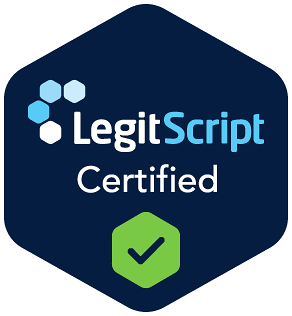Opioid Use Disorder Treatment in CO
Lasting recovery begins with care that’s grounded in clinical expertise. At Drift Behavioral Health in Colorado Springs, we combine expert care, proven therapies, and flexible outpatient options to help you recover with confidence.

What Is Opioid Use Disorder?
Opioid Use Disorder develops when a person becomes dependent on opioids, whether from a prescription or otherwise. It alters how the brain responds to pain and stress, making it hard to stop, even when it’s clearly harmful. With the right care and support, though, recovery is possible.

Opioid Addiction Statistics
An estimated 9.4 million US adults (3.7%) needed treatment for opioid use disorder in 2022 (CDC, 2024)
Only 1 in 4 adults who needed OUD treatment received medications like buprenorphine or methadone
Over 42% of adults who met criteria for OUD didn’t believe they needed treatment
A record 81,806 opioid-related overdose deaths were reported in 2022, the highest ever recorded in the US
Opioid Addiction Help at Drift Behavioral Health
Our outpatient rehab in Colorado Springs offers flexible, personalized treatment for opioid addiction. Whether you need daytime structure or evening support, we meet you where you are.

Partial Hospitalization Program
5–6 days a week, around 5 hours per day
PHP offers the highest level of outpatient structure, combining group therapy, individual counseling, medication support, and skill-building activities.

Intensive Outpatient Program
3–5 days a week, 3–4 hours per day
IOP provides focused care with more flexibility, ideal if you’re transitioning from higher levels of treatment or balancing recovery with daily responsibilities.

Telehealth Options
Attend all levels of care online via secure Zoom sessions
Access the same expert care from home, including therapy, medication management, and case support, with flexible scheduling and added privacy.
What You Can Expect in Treatment
Optional 12-Step: If peer groups help you feel supported, you’ll have the option to join a recovery community that meets regularly.
Evidence-Based Therapies: Attend cognitive-behavioral therapy, dialectical behavior therapy, and one-on-one or group sessions if needed.
Medication-Assisted Treatment (MAT): Ease withdrawal with FDA-approved options like Suboxone, Sublocade, Vivitrol, or naltrexone.
A Trauma-Informed Approach: You’ll be in a space built on trust, with therapists who prioritize your comfort and emotional well-being.
Dual Diagnosis Support: We treat co-occurring substance use and mental health together, because both matter in recovery.
What Are the Warning Signs of Opioid Addiction?
If someone you care about seems different lately, it may be more than stress. These signs could point to a problem with opioid use:
- Taking higher doses or using pills more often than prescribed
- Withdrawing from family, friends, or normal daily routines
- Showing mood swings, irritability, or changes in sleep habits
- Hiding pills, lying about use, or avoiding conversations about it
Opioid Withdrawal Symptoms
When someone stops using opioids, their body reacts quickly, going into withdrawal almost immediately. Symptoms can go from mild to overwhelming, and support makes all the difference. Common symptoms include:
- Nausea and vomiting
- Body aches and chills
- Anxiety and agitation
- Sweating and yawning
- Insomnia
- Runny nose and watery eyes
How Long Does Opioid Withdrawal Last?
Withdrawal unfolds in stages. Here’s what to expect:
- 6 to 12 hours: Early symptoms begin: muscle aches, anxiety, cravings
- 1 to 3 days: Symptoms peak: nausea, shaking, sweating, mood swings
- Up to 7 days: Physical symptoms taper off, but fatigue, sleep issues, and mood changes may remain
Supervised detox keeps you safe and supported during the toughest stages. Medical teams can ease symptoms, monitor for complications, and help prevent relapse.
The Long-Term Effects of Opioid Abuse
- Changes in memory, focus, or decision-making
- Ongoing digestive problems and constipation
- Heart and breathing issues that build over time
- Greater risk of overdose, anxiety, or depression
Ongoing Support for Opioid Recovery in CO
Recovery doesn’t stop when treatment ends. At Drift, we help you build a plan for what comes next and stay connected to care that lasts. You’ll leave with tools, resources, and people you can count on.
Support includes:
- A personalized aftercare plan
- Help with sober living placement
- Alumni groups and peer mentorship
- Ongoing therapy and relapse prevention

You’re in Good Hands With Drift Behavioral Health
You don’t have to face opioid addiction alone. At Drift Behavioral Health, we offer compassionate, expert-led care in a setting designed for healing, whether you’re joining us in person or online. We’ll help you take back control, build real stability, and move forward with confidence. If you’re ready to get started, we’re ready to step in.
FAQs
What is opioid use disorder?
OUD is a medical condition where someone becomes dependent on opioids and can’t stop. For many, it starts as a way to manage pain or stress, and turns into something much harder to control.
What are the signs of opioid addiction?
You might notice strong cravings, hiding use, or needing more of the drug to feel normal. It often shows up in small ways first, like missed work or mood changes.
How is opioid use disorder treated?
Treatment usually combines therapy and medication. For example, medications like Suboxone or Vivitrol can reduce cravings, while counseling helps people understand why they use and how to move forward.
What are the risks of opioid use during pregnancy?
Using opioids while pregnant can affect both mother and baby, sometimes seriously. But with medical support, these risks can be reduced.
Resources and Citations
Latest Resources
- 22/08/2025
If you’re thinking about quitting smoking or just curious about what’s going on inside your body, understanding how long nicotine lingers is important. Reasons can vary, whether you need to
- 20/08/2025
The adolescent years bring major changes, like new responsibilities, shifting friendships, and rapid brain development. While mood swings are a common and widely accepted part of adolescence, persistent sadness, withdrawal,
- 07/07/2025
Ketamine is a powerful dissociative drug. Initially used in medical settings, it’s now showing up more often at parties, clubs, and festivals across the US. While it’s not physically addictive




